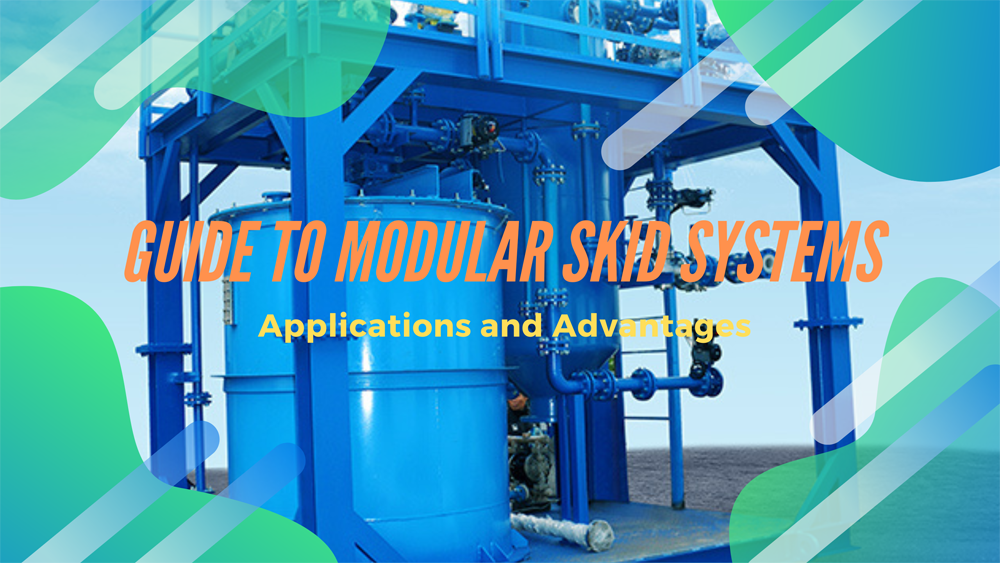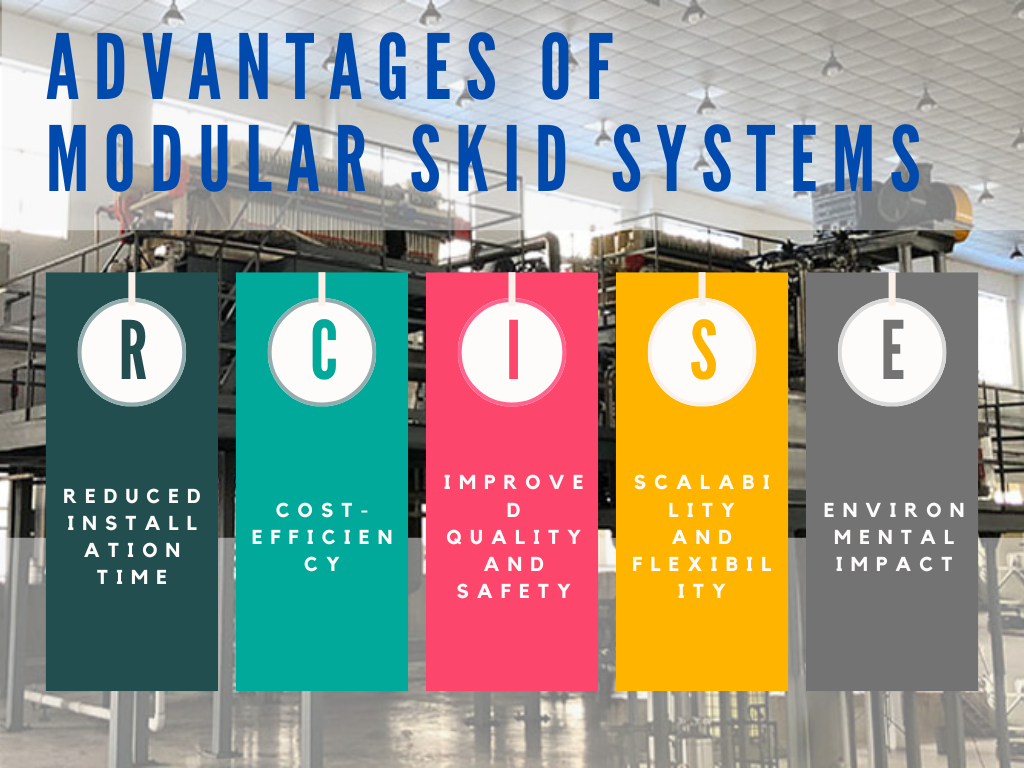
In today's fast-paced industrial landscape, efficiency and scalability are paramount. Modular skid systems represent a pivotal solution, offering remarkable flexibility and ease of integration in various industrial applications. This guide delves into the world of modular skid systems, breaking down their components, functionality, and the immense benefits they bring to the table.
Modular skid systems are pre-assembled units that incorporate process system machinery and its associated components all mounted on a frame or a skid. These systems are designed to be easily transported and quickly connected on site, making them ideal for industries that require rapid setup and demobilization. Common components include piping, pumps, motors, and instrumentation, all pre-configured to work together seamlessly.
The modular nature of these systems not only simplifies design and installation but also enhances reliability and safety by allowing for thorough pre-testing before deployment. As industries seek ways to reduce downtime and improve operational agility, modular skid systems stand out as a key enabler of both.
Modular skid systems are not confined to one specific sector; rather, they are a versatile solution applied across a spectrum of industries due to their efficiency and scalability. Below are some of the primary areas where these systems are making a significant impact:
1.Oil and Gas Industry: Modular skids are used for early production facilities, metering stations, and as plug-and-play components in refineries. They are particularly valued for their ability to be rapidly deployed in remote locations.
2.Chemical Processing: These systems facilitate the seamless integration of process units in chemical plants, supporting operations such as mixing, separation, and chemical reaction processes.
3.Pharmaceuticals: In the pharmaceutical industry, modular skid systems are crucial for processes like formulation, blending, and sterile manufacturing, ensuring compliance with strict regulatory standards.
4.Water Treatment: Skid-mounted units are employed in water and wastewater treatment plants for processes including filtration, chemical dosing, and aeration.
5.Power Generation: Modular skids are used for steam generation, fuel handling, and emissions control systems within power plants.
The table below provides a quick overview of these applications, highlighting the specific benefits modular skid systems bring to each industry:
| Industry | Application | Benefits |
| Oil and Gas | Early production, metering stations, refineries | Speed, adaptability, cost-efficiency |
| Chemical Processing | Mixing, separation, reaction processes | Precision, safety, regulatory compliance |
| Pharmaceuticals | Formulation, blending, sterile manufacturing | Compliance with health standards, precision |
| Water Treatment | Filtration, chemical dosing, aeration | Efficiency, environmental compliance, adaptability |
| Power Generation | Steam generation, fuel handling, emissions | Efficiency, reduced environmental impact |
Modular skid systems offer a plethora of advantages that make them highly attractive for various industrial applications. These benefits not only contribute to operational efficiency but also provide significant economic and environmental advantages. Here’s an in-depth look at some of the key benefits:

Reduced Installation Time: Since modular skid systems are pre-fabricated and tested off-site, the installation process is significantly faster compared to traditional on-site construction. This pre-assembly reduces project timelines and allows for quicker operational commencement.
Cost-Efficiency: The controlled environment of off-site fabrication minimizes typical on-site challenges and disruptions, which can otherwise escalate costs. Additionally, the need for less on-site labor and reduced construction time also leads to substantial cost savings.
Improved Quality and Safety: Manufacturing in a controlled environment enhances the quality of construction and assembly, reducing the likelihood of errors and defects. This control extends to improved safety standards, minimizing the risk of accidents associated with on-site construction.
Scalability and Flexibility: Modular systems can be easily expanded or reconfigured to meet changing process requirements. This flexibility allows facilities to adapt to new regulations or technologies without extensive modifications to existing infrastructure.
Environmental Impact: The reduced site disturbance during installation and the efficiency of operation contribute to a lower environmental footprint. Modular skid systems often lead to reduced waste and emissions, aligning with the increasing demands for sustainable industrial practices.
The table below summarizes these advantages:
| Benefit | Description |
|---|---|
| Reduced Installation Time | Faster setup and commencement due to pre-fabrication and testing off-site. |
| Cost-Efficiency | Lower overall costs due to controlled fabrication and reduced on-site labor. |
| Improved Quality and Safety | Enhanced construction quality and safety from controlled manufacturing. |
| Scalability and Flexibility | Easy expansion and reconfiguration capabilities. |
| Environmental Impact | Lowered environmental footprint through efficient operation and less waste. |
The installation and maintenance of modular skid systems are crucial aspects that contribute to their overall performance and longevity. Here's a guide to ensuring that these systems are installed correctly and maintained effectively:
1.Site Preparation: Before the arrival of the modular skid, ensure that the site is prepared with all necessary infrastructure such as foundations, connections for electrical, and plumbing.
2.Transport and Placement: Given their pre-assembled nature, modular skids need to be transported carefully to the site and placed using cranes or other heavy equipment. Positioning should be precise to facilitate easy connections.
3.Integration with Existing Systems: Connect the skid to existing systems, ensuring that all fittings and connections are secure and leak-proof. This might involve some onsite adjustments to ensure seamless integration.
4.Testing and Commissioning: Once installed, the entire system should be tested under operational conditions to verify that all components are functioning correctly. This step is vital to address any issues before full-scale operation begins.
1.Regular Inspections: Schedule regular inspections to check for leaks, corrosion, or wear and tear on mechanical components. Early detection of issues can prevent costly downtime.
2.Cleaning and Servicing: Regular cleaning and servicing of the skid’s components, such as filters and seals, ensure optimal performance and longevity.
3.System Updates and Upgrades: Keep the system updated with the latest technology and make necessary upgrades to components when required. This not only enhances efficiency but also extends the lifecycle of the skid.
4.Record Keeping: Maintain detailed records of all maintenance activities, inspections, and repairs. This documentation is invaluable for troubleshooting and for planning future upgrades.
As industries evolve and technology advances, modular skid systems are poised to see significant developments that will enhance their applicability and performance. Understanding these future trends is crucial for businesses looking to invest in these systems and for industries planning long-term strategies.
1.Integration of IoT and Automation: The future of modular skid systems includes greater integration with the Internet of Things (IoT) and automation technologies. This integration allows for real-time monitoring and control, which enhances operational efficiency and predictive maintenance capabilities.
2.Advanced Materials and Manufacturing Techniques: Innovations in materials science and manufacturing techniques, such as 3D printing, are expected to make skid systems lighter, more durable, and more cost-effective. These advancements could also lead to more customized designs that are tailored to specific industry needs.
3.Energy Efficiency and Sustainability: With a growing focus on sustainability, future modular skids are likely to incorporate more energy-efficient processes and environmentally friendly materials. These changes will help reduce the carbon footprint of industrial operations and align with global environmental standards.
As these technologies become more mainstream, the adoption rates of modular skid systems are expected to rise across various sectors, including emerging industries like renewable energy and biotechnology.
The versatility and scalability of modular skid systems make them particularly attractive in sectors where rapid expansion and flexibility are required.
The market for modular skid systems is anticipated to grow substantially, driven by the need for faster deployment and flexible manufacturing options.
Continued investment in R&D will likely yield more sophisticated systems that can be deployed even more quickly and with greater customization options.
Modular skid systems have increasingly become a cornerstone of modern industrial operations, offering a blend of efficiency, cost-effectiveness, and adaptability that traditional systems struggle to match. As we have explored, their applications span across diverse industries—from oil and gas to pharmaceuticals and power generation—providing tailored solutions that streamline operations and enhance productivity.
The advantages of these systems are clear: reduced installation times, enhanced safety, improved environmental impact, and greater operational flexibility. These benefits make modular skid systems a compelling choice for businesses looking to optimize their processes and prepare for future challenges.
Looking forward, the integration of advanced technologies such as IoT, automation, and sustainable materials will further enhance the capabilities of modular skid systems. With ongoing advancements in technology and materials, these systems are set to become even more integral to industrial operations worldwide, driving innovation and sustainability.
Feel free to leave your message on our board. If you're looking to inquire about prices or place an order, this is the right place! Let us know the details of your needs, and our team will get back to you with a personalized quote as quickly as possible. We're here to ensure your experience is seamless and satisfactory. Share your requirements or ask any questions you might have - we're eager to assist and look forward to doing business with you!
Name:Tim
Phone:+86-15716151880
Email:[email protected]
Company:BEANT
Address:No. 28, Luoshen Road, Luoshe Town, Huishan District, Wuxi City, Jiangsu Province
